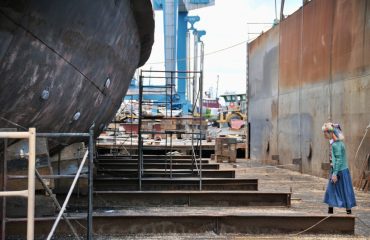The steel sector, a cornerstone of global infrastructure and manufacturing, presents both immense opportunities and significant challenges for new entrants. Navigating this complex landscape requires a well-defined market entry strategy. This comprehensive guide explores various approaches, highlighting key considerations for success in this competitive industry.
1. Thorough Market Analysis: Laying the Foundation for Entry
Before committing resources, a meticulous market analysis is paramount. This involves identifying target markets based on factors like demand, growth potential, regulatory environment, and competition. Detailed analysis should include:
- Demand Forecasting: Projecting future steel demand based on macroeconomic indicators, infrastructure projects, and industrial growth in the target market.
- Competitive Landscape: Identifying key players, their market share, pricing strategies, and competitive advantages. Understanding the existing supply chain and distribution networks is crucial.
- Regulatory Environment: Analyzing tariffs, import quotas, environmental regulations, and labor laws that may impact operations and profitability. Compliance with local standards is essential.
- Infrastructure Assessment: Evaluating the availability of transportation, energy, and raw materials in the target market. Logistical costs can significantly impact profitability.
- Customer Segmentation: Identifying key customer segments (e.g., construction, automotive, manufacturing) and their specific needs and preferences.
This in-depth analysis will inform the choice of market entry strategy and guide subsequent decisions.
2. Choosing the Right Market Entry Mode: Organic Growth vs. Strategic Alliances
Companies have several options for entering the steel market, each with its own set of advantages and disadvantages:
- Exporting: This is a low-risk entry strategy, ideal for testing the market and building brand recognition. However, it may involve higher transportation costs and potential trade barriers.
- Joint Ventures: Partnering with a local company can provide access to resources, distribution networks, and market knowledge. This strategy requires careful partner selection and negotiation.
- Foreign Direct Investment (FDI): Establishing a wholly-owned subsidiary allows for greater control and potential for higher returns. However, this strategy requires significant capital investment and carries higher risk.
- Acquisitions & Mergers: Acquiring an existing steel company can provide immediate market access and established operations. However, this strategy often involves high costs and integration challenges.
- Licensing & Franchising: Granting licenses to local companies to produce and distribute your steel products can be a low-risk approach, but it may limit control over quality and branding.
The optimal entry mode depends on factors like capital availability, risk tolerance, market knowledge, and strategic goals.
3. Navigating the Complexities of Steel Production and Supply Chains
The steel industry is characterized by complex and often geographically dispersed supply chains. Understanding these complexities is crucial for successful market entry. Key considerations include:
- Raw Material Sourcing: Securing reliable and cost-effective sources of iron ore, coal, and other raw materials is essential. This may involve establishing long-term contracts with suppliers.
- Production Capacity and Technology: Determining the optimal production capacity and choosing appropriate technology are critical decisions. Factors like energy costs, environmental regulations, and market demand should be considered.
- Logistics and Distribution: Efficient transportation and distribution networks are crucial for delivering steel products to customers on time and at a competitive cost. This may involve establishing strategic partnerships with logistics providers.
- Quality Control and Certification: Meeting international quality standards and obtaining relevant certifications is essential for building trust and credibility with customers.
- Waste Management and Environmental Compliance: The steel industry has a significant environmental footprint. Adhering to environmental regulations and implementing sustainable practices are crucial for long-term success.
Effective management of the supply chain is crucial for minimizing costs and ensuring timely delivery.
4. Building Strong Relationships: Customers, Suppliers, and Stakeholders
Success in the steel sector hinges on building strong relationships with various stakeholders. This includes:
- Customer Relationship Management (CRM): Developing strong relationships with customers by understanding their needs, providing excellent service, and building trust is essential for repeat business.
- Supplier Relationships: Establishing long-term relationships with reliable suppliers ensures a stable supply of raw materials at competitive prices.
- Government and Regulatory Bodies: Maintaining open communication with government agencies and regulatory bodies ensures compliance and facilitates smooth operations.
- Community Engagement: Building positive relationships with local communities is crucial for securing social license to operate and mitigating potential conflicts.
- Industry Associations: Participating in industry events and joining relevant associations provides opportunities for networking, knowledge sharing, and advocacy.
Cultivating strong relationships fosters trust, collaboration, and long-term sustainability.
5. Adapting to Market Dynamics and Technological Advancements
The steel industry is constantly evolving, driven by technological advancements, fluctuating commodity prices, and changing market demands. Successful market entry requires adaptability and a willingness to embrace change. This includes:
- Technological Innovation: Investing in advanced technologies such as automation, robotics, and data analytics can enhance efficiency, reduce costs, and improve product quality.
- Sustainable Practices: Adopting sustainable practices, such as reducing carbon emissions and improving resource efficiency, is becoming increasingly important for attracting customers and meeting regulatory requirements.
- Market Diversification: Expanding into new markets or product segments can mitigate risk and capitalize on emerging opportunities.
- Strategic Partnerships: Collaborating with other companies can provide access to new technologies, markets, or resources.
- Continuous Improvement: Implementing robust quality control systems and continuously seeking ways to improve efficiency and reduce costs are crucial for maintaining competitiveness.
Adaptability and a proactive approach to innovation are essential for long-term success in the dynamic steel sector.
Entering the steel sector requires a strategic and well-planned approach. By conducting thorough market analysis, selecting the appropriate entry mode, navigating supply chain complexities, building strong relationships, and adapting to market dynamics, companies can increase their chances of forging a successful future in this vital industry.
SEO Tags: steel market entry, steel industry strategy, global steel market, steel manufacturing, market analysis




